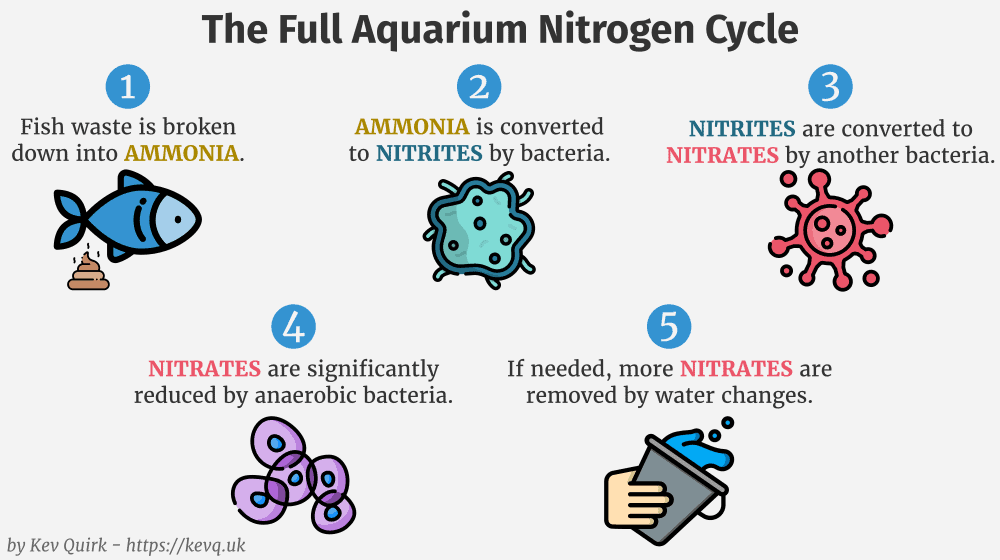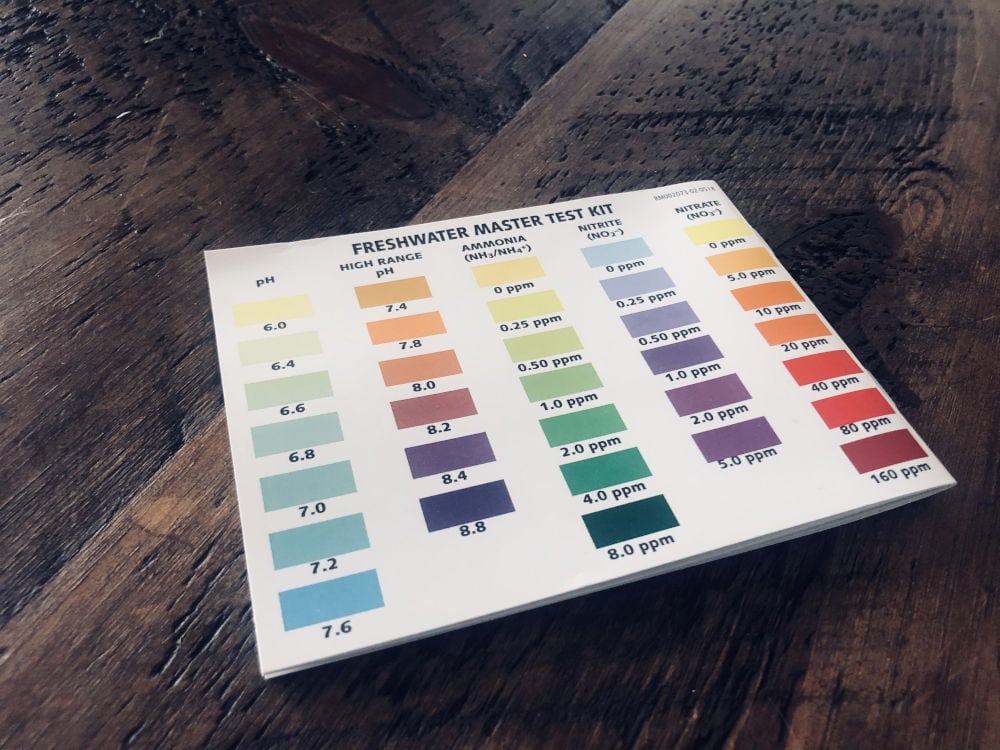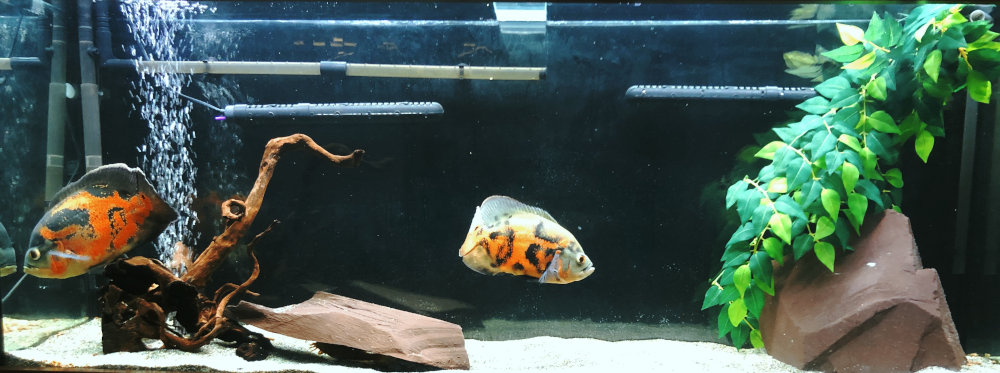How To Cycle An Aquarium
If you're new to fishkeeping, you _need_ to cycle your aquarium before stocking your tank with live animals. This post will show you how I personally do this.
Before adding livestock, it’s very important to cycle an aquarium first. Cycling is the process of establishing bacteria colonies so the nitrogen cycle takes place. It’s really simple to do, but hugely important.
If you don’t cycle an aquarium before adding fish, you could be poisoning them to the point where they die!
There are a number of ways to do a cycle, this is just the way I personally do it and it’s always worked well for me. You’re going to need a few things before you get started:
- Something that can be broken down to produce waste in lieu of fish. I tend to use supermarket bought prawns.
- A water testing kit. I recommend the API test kit.
- A booster solution to add bacteria to your tank. I recommend API Quick Start.
- Patients - this process takes weeks.
Starting the Cycle
First thing you need to do is fill your tank with water and treat it with water conditioner (I would recommend Seachem Safe); then, setup your filtration.
Once that’s done, plop a few prawns into your tank and leave them there. Also start dosing your tank with your boosting solution, per the recommended guidelines on the packaging.
Note: API Quick Start says that you can “immediately add fish” on the bottle. YOU CANNOT! This is a sales ploy - complete your cycle first.
After a few days, the prawns will start to look disgusting and your water will likely have a milky hue to it. That’s a good thing - this is a biological bloom and means your bacteria culture is starting to form.

If you look at the image above, you don’t have fish in your tank producing waste, so you’re simulating that with the prawns. These are being broken down into ammonia (step 1) and your bacteria are starting to colonise your tank/filtration to break down the ammonia into nitrites (step 2).
Water Testing
At this point you need to be doing regular water tests. I would recommend doing this daily. However, if you want to make your test kit last longer, every 2 days is ok.
I personally use the API Master Test Kit, which tests for pH, ammonia, nitrite and nitrate. We’re not concerned about the water pH for cycling, but once your cycle is complete, you will need to make sure that the fish you intend to stock your tank with are compatible with the pH of your water.
From your water tests, you will start to see a spike in ammonia. You should be aiming for the ammonia hit 1.0 ppm. If you have too much ammonia, remove some prawns, if you don’t have enough, add some.

After a few more days of having ammonia in the system, you should start seeing the nitrites increase. Eventually, you should see your ammonia disappear completely and be replaced by nitrites. Again, this is a good thing as it means you’re moving onto step 3 of the nitrogen cycle.
At this point, another bacteria will start to grow in your aquarium. This bacteria will convert your nitrites into nitrates. Keep testing your water every day or so. After 2-4 weeks, you should see that your aquarium consistently has zero ammonia and nitrites, and the nitrates are climbing. Congratulations, your initial cycle is complete.
Adding Fish
Once you’re at the point where your test results are zero for ammonia and nitrite, and your nitrates are rising, you can start adding fish. Remember to remove all the prawns at this point!
I would add fish in a staged approach though, depending on what you’re going to have. If you only intend to have a small school of fish, then just add them, but if you’re intending to build a large community tank, add them in stages.
Although you do have a cycled aquarium, you’re only cycled for a bio-load of 1.0 ppm of ammonia. So if you all of a sudden add 100 fish that produce 3.0 ppm of ammonia, you may crash your system and cause another cycle to start.
This is because your bacteria can’t cope with the amount of waste being produced, and it will take time for more to grow. By adding your fish progressively, you build up your bacteria colonies in stages, thus ensuring the stability of your aquarium parameters.
While adding fish in stages, keep adding your booster solution to help the bacteria colonies grow. You don’t need to do this, but it will help your bacteria colonies to grow more quickly.
Watch Those Nitrates
Once you start adding fish, remember those nitrates are creeping up all the time, so remember to do weekly water changes of 30-50% to keep on top of them.
If your nitrates are hitting more than 40 ppm a week, then I would suggest doing water changes more often, or upping the amount of water you’re changing to 60-75%. Although big water changes can stress some fish due to the large fluctuations in water parameters. I’ve always found that smaller water changes more often is better.
High nitrates may also be an indication of inadequate filtration, or over stocking. If you’re unsure, seek advice. I would strongly recommend r/aquariums on Reddit as a really good source of quality advice.
If you have the right media and the appropriate filtration, you may eventually create a colony of anaerobic bacteria that will feed on nitrates, thus reducing them, but that can take up to 6 months to accomplish.
Conclusion
You now should have a good idea of how to cycle an aquarium. Like most things in this hobby, there are multiple ways to do this; this is just the way I personally do it.
Other people prefer to add ammonia instead of prawns, that’s fine too. Whatever works for you. Just make sure you’re doing regular water tests and monitoring your parameters.
Finally, just for good measure, here is a picture of my favourite tank. It’s a 350 litre (90 us gal) tank containing my two Oscar cichlids, Betty & Dice. If you look closely, you can also see my Bristlenose Pleco hiding under the rock.
